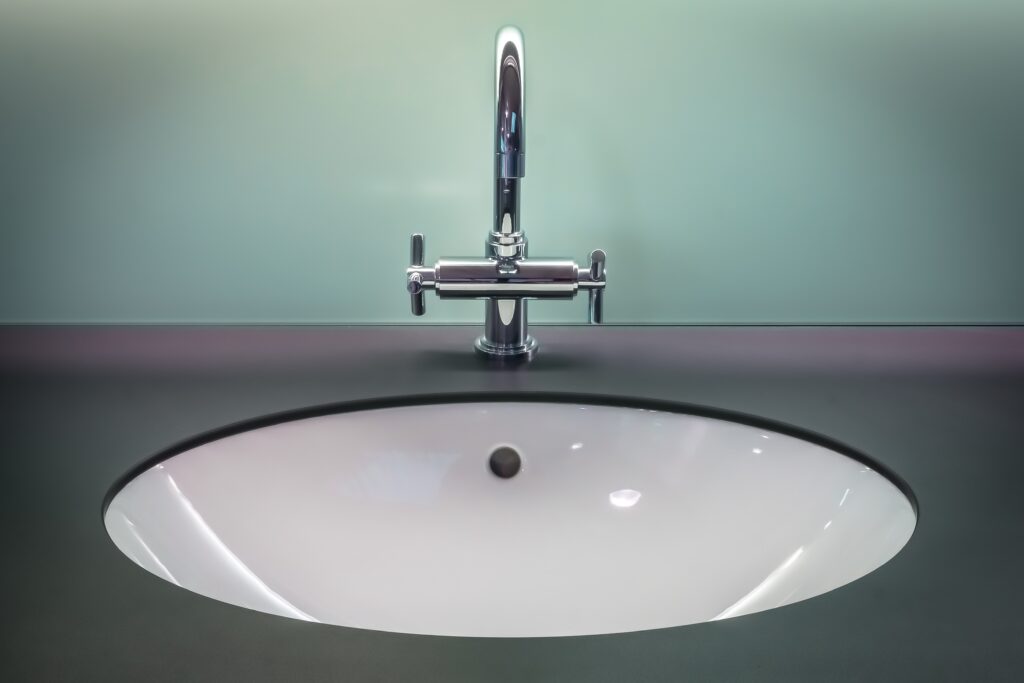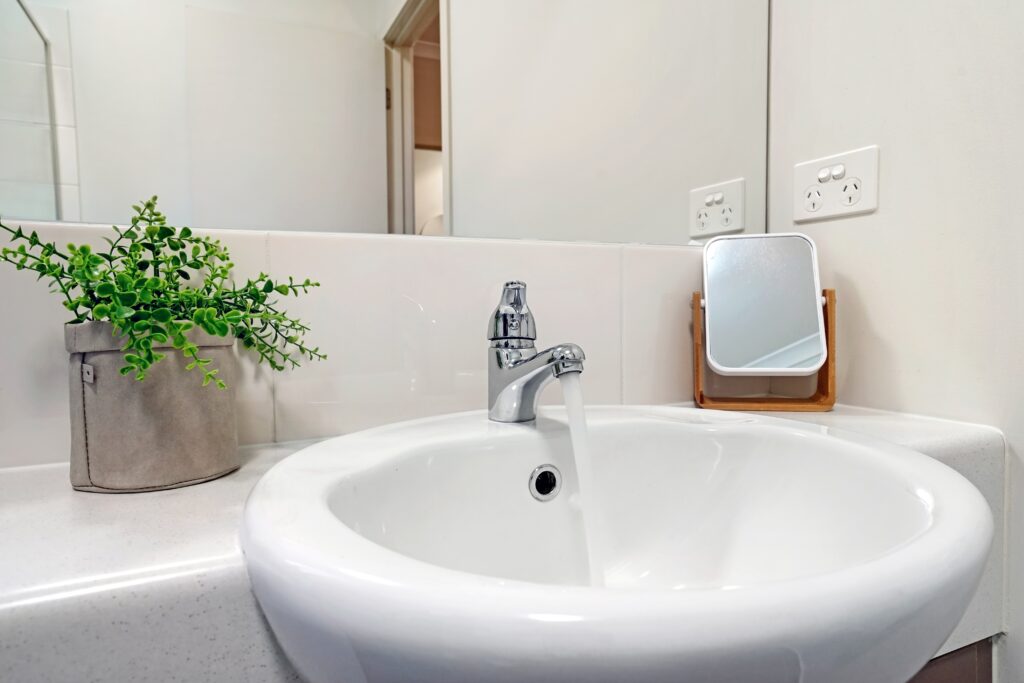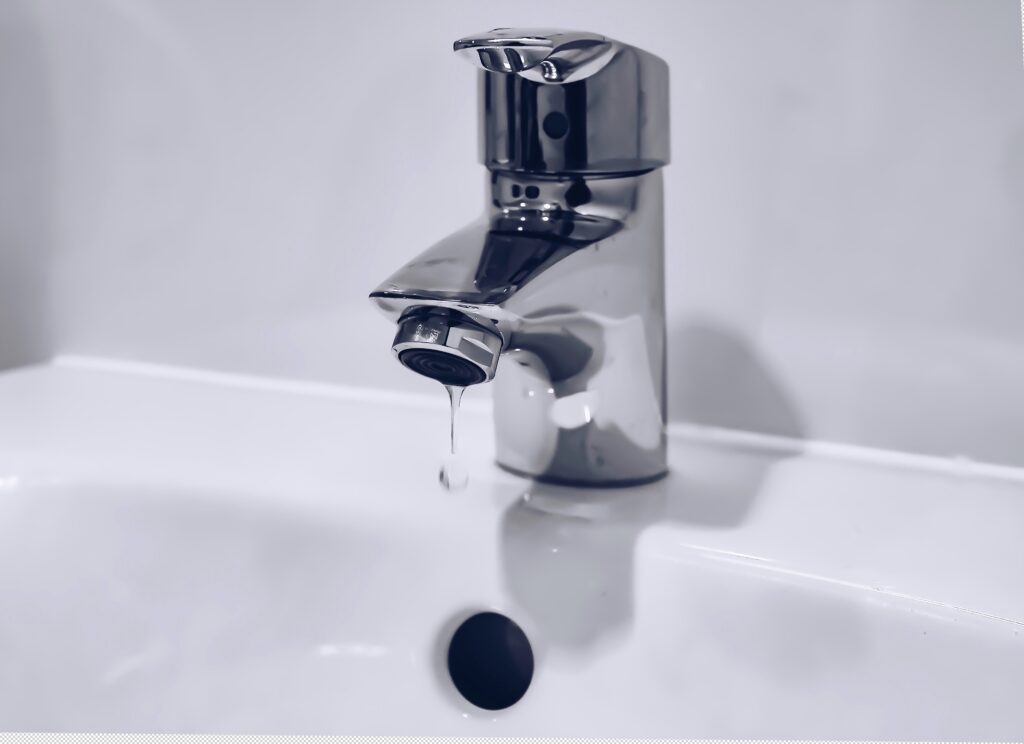As an Amazon Associate we earn from qualifying purchases.
A good start makes a good day. But what if you enter your washroom and a bad odor stops your day before it even begins? But don’t you worry, here is a multiple-method guide that will teach you how to clean sink overflow.
As a background, this smell could be coming from your sink that hasn’t been cleaned for long. The overflow hole might have got clogged and is not functioning anymore. Carry on!
Contents
How to Clean Sink Overflow
It’s a lot easier to pull off than you’d think:
Method #1: Use Hot Water
With frequent use and less maintenance, your household sink can impart a foul smell. This happens because of bacteria that have settled in the drain. Also, these unwanted organisms can clog the path of water and leave the sink overflowing.
A very simple way to unclog the sink and remove the stinking smell is to pour a kettle full of boiling water into the sink.

By pouring boiling water into the overflow hole, the stagnant water in the drain would flush out. Moreover, molds and bacteria won’t be able to sustain such high temperatures. Thus, there won’t be any foul smell coming from the sink.
You can pour more hot water into the sink if the sink struggles to unclog the first time around.
—
Warning
Don’t pour the boiling water directly into the overflow hole. Use a silicone funnel that can withstand the high temperature of the water.
Also, be cautious while handling the boiling water as it can burn your hands. Avoid pouring water without the funnel, as it will lead to a crack in the sink.
—
Method #2: Use a Rubber Plunger
Using a rubber plunger is one of the most common methods to unclog sink overflow. The plunger helps in unclogging the drains or overflow holes by creating suction across the rim. If you are all set to clean your kitchen or any other sink overflow, do the following:
- Fill the overflow hole halfway with hot water.
- Use a flat bottom plunger instead of a regular plunger to create suction.
- Stick the plunger across the rim of the overflow hole with force.
- Create suction by moving the handle of the plunger back and forth.
- Repeat the process for 5-10 minutes.
- Remove the plunger and drain down the water from the overflow hole to check if this method worked or not.
Method #3: Use a Sink Overflow Cleaning Brush
Today the market is flooded with various supplements that have made household chores easier. Getting your hands on one of the many overflow cleaning brushes can help you deal with an overflowing sink quickly.
These come with lots of spiral bristles for unclogging the overflow drainpipe. The bristles on the flexible brush help you reach difficult corners of the overflowing sink.
All you need to do is to put this cleaning brush in the overflow hole and slide it back and forth.
After unclogging the overflow hole, run hot water through the sink overflow. Use a silicone mold to pour hot water that will help to flush out the dirt into the drain. Repeat this step at least twice for best results.
Method #4: Use Vinegar With Baking Soda
Even if you use some of the unclogging methods above, the smell may not go away completely. This foul smell might be coming from a dry P-trap or stagnant water that hasn’t been replaced properly. It is also possible that the sink wasn’t cleaned properly.
In such cases, just using hot water may not be enough. But you can use ½ cup of baking soda and ½ cup of vinegar from your drawers.
Use a snake tool to unclog the sink, then add ½ cup of baking soda and vinegar using a funnel or silicone mold and let the solution sit for 15-20 minutes.
Flush the solution with hot or boiling water. Beware while draining boiling water through your porcelain sink as it may fall apart.
Therefore, rather than pouring all of the water at once, pour it in parts. If the smell persists, repeat the process another time.

Method #5: Use a Bio-Enzyme Cleaner
Bio-enzymes are natural cleaners that are used for multiple purposes. They are easy on your pocket and don’t negatively impact the environment. They unclog the overflow and kill the bacteria that live in the moist lining of the pipe.
Bio-enzyme cleaners are available in both liquid and powdered forms. To clean your sink overflow hole, grab 50ml of powdered bio-enzyme cleaner and mix it in 100ml of lukewarm or hot water.
You can also use the liquid bio-enzyme cleaner, mix 50 ml of the solution in 100ml of hot-lukewarm water and let the solution sit for 30- 60 minutes.
Pour this solution into the overflow hole and let it sit overnight. Rinse off the solution the following day with hot boiling water.
Method #6: Use Drain Cleaner
Like the bio-enzyme cleaner, a drain cleaning solution can also get the same results. But unlike Bio-enzyme cleaners, drain cleaners are not eco-friendly and have a strong chemical smell.
Mix a 50g sachet of drain cleaner in a mug full of tap water and flush the overflow hole with the solution. Repeat this process twice for better results.
Finally, run hot boiling water down the line to remove the settled debris across the pipeline of the overflow hole.
Tip: Since the smell of the drain cleaner is quite strong, it is advised to use a drain cleaner that has added floral or fruity fragrance for better odor.
Method #7: Call a Plumber
If the problem continues to exist, it could be due to some other issues in the pipeline that cannot be fixed manually. The drain mechanism is quite complex, that’s why one should consult a professional for this.
It is possible that your overflow hole is clean and there is no stagnant water in the drain, but still, the smell persists from the sink. It could be possible because of the following reasons:
- Sometimes small pests get stuck in the drain pipeline; due to lack of movement, they succumb and impart an unpleasant smell across the pipeline.
- It is also possible that the sewer connection is leaking and causing a foul smell.
Hence, try contacting a professional or a plumber who can help with your drainage problem.
Frequently Asked Questions
How does sink overflow work?
A sink overflow is a hole on the inner walls of the sink that runs down the drain. The channel that connects the drain to the overflow hole is hidden and is inside the basin. When the sink is about to overflow with water, the hole drains an enormous amount of water down the line and keeps everything in a good state.
Why is there no overflow hole in the kitchen sink?
Kitchen sinks are usually large. Also, their design is quite different from the bathroom sink, which allows them to drain water without overflowing.

Conclusion
The hole in your bathroom or another sink under the faucet is a ‘sink overflow hole.’ The main purpose of having this hole is to prevent the sink from flooding. Thus, when water fills up to the top, this hole prevents it from spilling.
As time passes, these helping holes can get clogged because of penetrating microorganisms in the drain. These organisms breed in a moist condition.
Thus, the overflow hole is a perfect place for them to breed. Apart from molds, another kind of grime or debris can also clog the hole. While not all bathroom sinks have an overflow hole, it is a good to have for your acrylic sinks or fiberglass sinks.
By following this multiple method guide, you can take care of the sink on your own without going to a professional all the time. Also, you can prevent the hole from clogging completely after going over this study.
